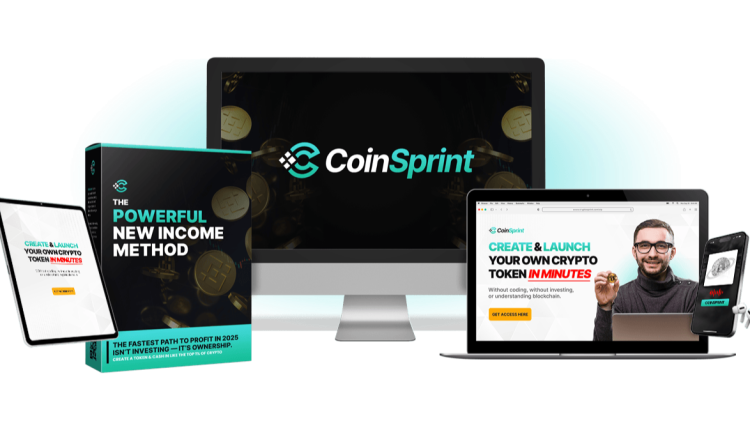Top 5 Crypto Mistakes To Avoid When Launching A New Coin In 2025
Key Takeaways
- Building a token without a clear utility purpose is the #1 reason most new token projects fail within their first year
- Security vulnerabilities in smart contracts remain the biggest financial risk to token creators and their communities
- Understanding which regulations apply to your specific token type before launch can save you from costly legal battles later
- Creating sustainable tokenomics that balance incentives for both early and long-term holders is crucial for project longevity
Token creation has never been more accessible, with – but that accessibility comes with significant risks for unprepared creators. The cryptocurrency landscape is littered with failed token projects that could have succeeded with proper planning and foresight. As a new token creator, your success depends not just on technical implementation but on avoiding critical strategic mistakes that can doom your project before it gains traction.
Let’s examine the most common fatal errors new token creators make and, more importantly, how you can prevent them from happening to your project.
Building a Token Without Real-World Utility
1. Common signs your token lacks genuine purpose
The most prevalent mistake new token creators make is launching without solving an actual problem. Your token might be technically sound, but without real utility, it’s just another speculative asset in a sea of thousands. Warning signs your token lacks genuine purpose include difficulty explaining its value proposition in one sentence, building features that existing tokens already handle efficiently, or focusing primarily on price appreciation rather than functional benefits.
Many creators fall into the trap of creating a token first and searching for its use case later. This backward approach rarely succeeds because users and investors can easily identify tokens that exist solely for fundraising purposes rather than delivering unique value.
2. Identifying market gaps your token can address
Successful token projects begin with thorough market research to identify legitimate gaps in the crypto ecosystem. recommends examining friction points in existing blockchain applications where a properly designed token could improve efficiency, reduce costs, or enable new capabilities.
Consider conducting user interviews with your target audience to understand their pain points when using similar blockchain products. Look for recurring complaints or limitations in competing projects that your token could specifically address. The most successful tokens solve problems users already recognize they have, rather than creating theoretical solutions in search of problems.
3. Connecting token design to actual user needs
Once you’ve identified a legitimate market gap, your token’s features should directly address user needs. Every aspect of your token’s design should serve a practical purpose in your ecosystem. For example, if your token aims to improve governance in a DAO, its distribution, voting mechanisms, and delegation features should all align with that core purpose.
Don’t add complexity for its own sake. Each feature should solve a specific problem or enhance user experience measurably. Document how each component of your token directly connects to your target users’ needs, and be prepared to explain these connections clearly to potential investors and community members.
Neglecting Critical Security Protocols
1. Smart contract vulnerabilities that attract hackers
Smart contract vulnerabilities represent the most significant financial risk to your project and community. Common attack vectors include reentrancy exploits, arithmetic overflows/underflows, access control flaws, and front-running opportunities. These vulnerabilities are particularly dangerous because smart contracts are typically immutable once deployed, meaning bugs can’t be easily fixed.
Many new token creators rely on templates or copy existing code without understanding the security implications. This approach almost guarantees that vulnerabilities will exist in your project. Even seemingly minor coding errors can lead to catastrophic fund losses, as seen in numerous high-profile hacks where millions of dollars were stolen due to simple oversight.
2. Must-have security measures before launch
Implementing strong security measures isn’t optional—it’s essential for project survival. At a minimum, your security protocol should include:
- Complete code documentation explaining every function’s purpose and potential risks
- Implementation of rate limiting and circuit breakers to prevent flash loan attacks
- Access control mechanisms with appropriate role separation
- Emergency pause functionality for critical security situations
- Thoughtful handling of external calls to minimize trust assumptions
Before mainnet deployment, conduct multiple rounds of testnet simulations with realistic transaction volumes and attack scenarios. Security isn’t a one-time consideration but an ongoing process requiring constant vigilance and regular updates as new threats emerge.
3. Why skipping third-party audits guarantees failure
Even experienced developers miss vulnerabilities in their own code. Third-party audits provide crucial objective analysis that can identify risks invisible to your team. While audits represent a significant expense for early-stage projects, they’re substantially cheaper than a catastrophic security breach.
Choose audit firms with proven track records in your specific token type and blockchain. Request sample reports and verify their previous clients’ experiences. The best auditors don’t just identify problems—they recommend specific solutions and help implement security best practices throughout your development process.
Ignoring Regulatory Compliance Until It’s Too Late
1. Which regulations apply to your specific token type
The regulatory landscape for cryptocurrencies varies dramatically based on your token’s function, distribution method, and target markets. Security tokens (representing ownership in assets) face substantially different requirements than utility tokens (providing access to services). Many tokens that creators assume are utilities may legally qualify as securities under frameworks like the in the United States.
Jurisdictional differences add further complexity, as a token might be considered a security in one country but not another. Even after launch, regulatory classification can change based on how your token is used and marketed. Proactive compliance planning is essential before writing a single line of code.
2. Building compliant KYC/AML systems from day one
Know Your Customer (KYC) and Anti-Money Laundering (AML) procedures are increasingly mandatory for token projects globally. While some creators view these requirements as contrary to crypto’s ethos of privacy, implementing compliant systems from the beginning prevents significant headaches later.
Build KYC/AML processes that balance regulatory requirements with user experience. Consider partnering with established identity verification providers that specialize in blockchain projects rather than building these systems from scratch. Document your compliance procedures meticulously, as regulators often focus as much on process documentation as on the procedures themselves.
Implementing Unsustainable Tokenomics
1. Distribution models that destroy investor confidence
Tokenomics—how your tokens are distributed, unlocked, and utilized—can make or break your project. Common distribution mistakes include:
- Excessive team and advisor allocations without appropriate vesting schedules
- Insufficient liquidity at launch, causing extreme price volatility
- Inflationary mechanisms without corresponding token burn or value accrual
- Complex multi-token systems that confuse users and fragment value
Investors have become increasingly sophisticated about evaluating tokenomics. They specifically look for fair distribution, transparent vesting schedules, and alignment between team incentives and community interests. Unsustainable models that prioritize short-term gains over long-term value creation invariably fail.
2. Creating balanced incentives for long-term holders
Successful token projects create balanced incentive structures that reward both early supporters and long-term holders. Consider implementing:
- Staking mechanisms that provide passive income while reducing the circulating supply
- Governance rights that increase with holding duration
- Tiered benefits that offer additional utility to committed community members
- Fee-sharing models that distribute protocol revenue to token holders
The most sustainable tokenomics create virtuous cycles where token utility drives adoption, which increases value, which attracts more users. Each token action should contribute to this positive feedback loop rather than extracting short-term value.
Launching Without Community or Marketing Momentum
1. Community-building strategies that outperform paid advertising
Organic community growth consistently outperforms paid marketing for token projects. Effective community building starts long before your token launch through:
- Creating educational content that demonstrates your team’s expertise
- Building in public by sharing development milestones and challenges
- Engaging in relevant communities to understand user needs
- Developing ambassador programs that empower committed supporters
Community building isn’t just about numbers—it’s about creating a shared vision and sense of ownership. Quality community members who understand and believe in your project will provide more value than thousands of speculators drawn by marketing hype.
2. Creating authentic engagement before launch day
Authentic engagement requires vulnerability and transparency. Share your project’s challenges alongside successes. Invite community feedback on key decisions and demonstrate how this input shapes your development. Create opportunities for meaningful contributions beyond simple promotional tasks.
Establish clear community guidelines and moderation practices that foster constructive discussion while preventing toxicity. Community sentiment often determines a token’s trajectory more than technical features—projects that cultivate positive, collaborative communities typically outperform those with superior technology but toxic cultures.
3. Leveraging social proof to accelerate adoption
Strategic use of social proof can dramatically accelerate token adoption. This includes:
- Testimonials from respected industry figures
- Partnerships with established projects
- Case studies demonstrating real-world applications
- Transparent metrics showing project momentum
Most importantly, ensure all social proof is genuine. The crypto community quickly identifies and punishes manufactured endorsements or exaggerated claims. Authentic social proof from credible sources builds lasting trust that translates into sustained token demand.
Prevention Strategies That Lead to Successful Token Projects
Successful token projects don’t happen by accident—they result from deliberate planning and strategic decision-making. Implement these prevention strategies to maximize your chances of success:
- Start with a clear problem statement and validate it with potential users before designing your token
- Allocate at least 20% of your development budget to security measures, including multiple independent audits
- Obtain legal opinions on your token’s regulatory status in key markets before finalizing tokenomics
- Create a detailed token distribution schedule with transparent vesting periods aligned with project milestones
- Build a community around your project’s vision and values before introducing financial incentives
Successful token creation is a marathon, not a sprint. Projects that prioritize long-term sustainability over short-term hype consistently outperform their flashier counterparts. By avoiding these common mistakes and implementing these prevention strategies, you’ll position your token project for genuine long-term success.
For token creators looking to navigate the complex launch process with expert guidance, MunchEye provides essential resources and tools
{video_pr:link}


Comments are closed.